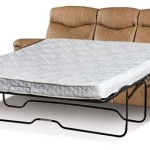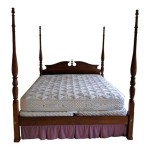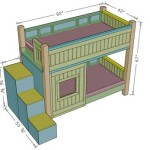How to Make Your Own Floating Bed
A floating bed is a striking design element that can transform any bedroom into a luxurious and surreal space. The illusion of levitation creates an air of tranquility and wonder, instantly elevating the overall ambiance. While commercially available floating beds are often expensive, crafting your own can be a rewarding project, allowing you to tailor the design and materials to your personal preferences and existing décor. This guide will provide step-by-step instructions on how to build your own floating bed, empowering you to create a unique and impressive centerpiece for your bedroom.
Understanding Floating Bed Construction
The construction of a floating bed relies on a clever combination of visual illusion and structural support. The bed frame is typically designed to be hidden from view, while the mattress rests on a discreetly positioned platform that appears to float in mid-air. Several methods are employed to achieve this effect, each offering unique advantages and disadvantages.
One common approach involves attaching the bed frame to the wall using sturdy brackets or metal legs. The frame is then concealed behind the mattress, creating the illusion of levitation. Another technique involves utilizing a hidden support beam beneath the bed, which is concealed by a decorative skirting or panel. This method can be particularly effective for creating a minimalist aesthetic.
Regardless of the chosen method, the key to building a successful floating bed lies in meticulous attention to detail. The supporting structures must be strong enough to safely hold the weight of the bed and its occupants, while the visual illusion must be well-executed to create a truly convincing effect.
Step-by-Step Guide to Building a Floating Bed
Creating your own floating bed requires careful planning, precise execution, and a commitment to quality materials. The following steps outline the process, providing guidance on each stage of the construction.
1. Planning and Design
Before beginning any construction, it is essential to plan the layout of your floating bed. Consider the size and dimensions of your mattress, the configuration of your bedroom, and the overall style you wish to achieve. Sketch out a detailed plan that includes measurements for the bed frame, supporting structures, and any additional features such as built-in storage or lighting.
2. Selecting Materials
Choose materials that are strong, durable, and suitable for the type of bed you are building. For the bed frame, hardwood such as oak or maple is recommended. Metal frames are also an option, especially for modern designs. The supporting structures can be made from steel, aluminum, or wood, depending on the chosen method and load requirements.
3. Building the Bed Frame
Construct the bed frame using the dimensions you have planned. If you are attaching the bed frame to the wall, make sure the brackets or metal legs are securely mounted and can support the weight of the bed. If you are using a hidden support beam, ensure it is adequately sized and reinforced to withstand the forces involved.
4. Creating the Floating Illusion
To create the floating effect, you will need to carefully conceal the supporting structures. If you are using brackets or metal legs, they should be hidden behind the mattress. If you are using a hidden support beam, attach a decorative skirting or panel around the perimeter of the bed to conceal it. Be sure to match the materials and finish to your existing décor to maintain a cohesive aesthetic.
5. Adding Finishing Touches
Once the floating bed is constructed, you can personalize it by adding finishing touches. Consider adding decorative elements such as built-in storage, lighting, or headboard designs. Paint the bed frame to match your existing décor or create a custom color scheme. Remember to choose finishes that are durable and resistant to wear and tear.
Tips for Creating a Successful Floating Bed
Here are some additional tips to enhance the success of your floating bed project:
- Consider the weight of the mattress: Choose a sturdy bed frame and support system that can safely hold the weight of the mattress and occupants.
- Ensure proper ventilation: Allow adequate airflow around the underside of the bed to prevent moisture buildup.
- Maintain a cohesive design: Choose materials and finishes that complement your bedroom décor to create a unified design aesthetic.
- Seek professional assistance if needed: If you are unsure about any aspect of the construction, consult with a skilled carpenter or contractor for expert guidance.
Building your own floating bed offers a unique opportunity to create a customized and stunning centerpiece for your bedroom. By following these steps and adhering to safety guidelines, you can bring your vision to life and enjoy the beauty and tranquility of a floating bed design.

King Size Floating Bed Frame Easily Build Your Own

How To Make A Floating Bed Time Lapse

Diy Floating Bed Frames How To Design Plan And Build Them From Scratch

Diy Floating Bed Frame 14 Steps With Pictures Instructables

King Size Floating Bed Frame Easily Build Your Own

How I Build My Floating Bed

King Size Floating Bed Frame Easily Build Your Own Diy Easy

Diy Floating Bed Howtospecialist How To Build Step By Plans

Build Your Own Floating Bed Diy Projects For Everyone

Diy Floating Bed Frames How To Design Plan And Build Them From Scratch







